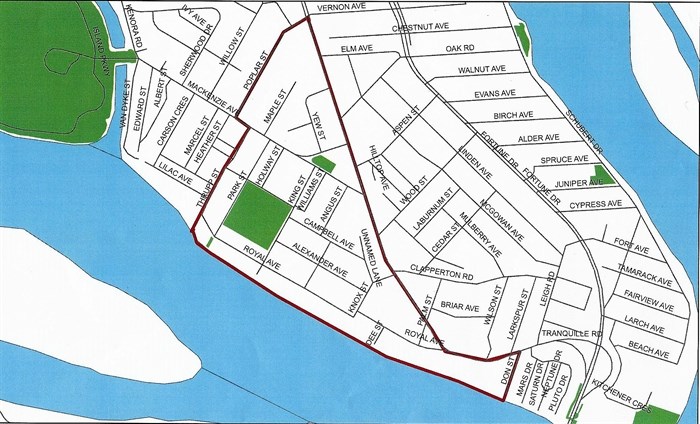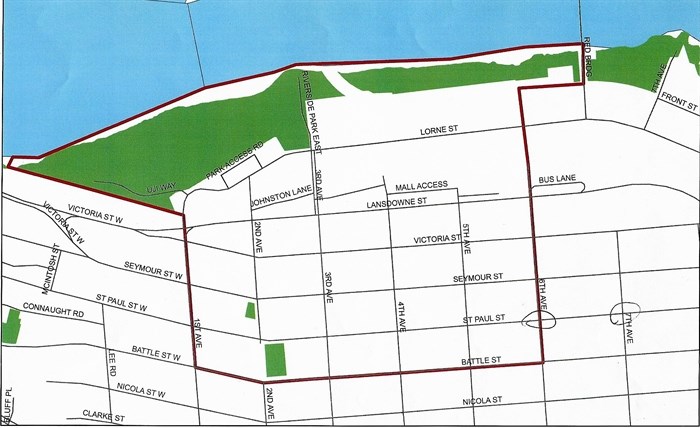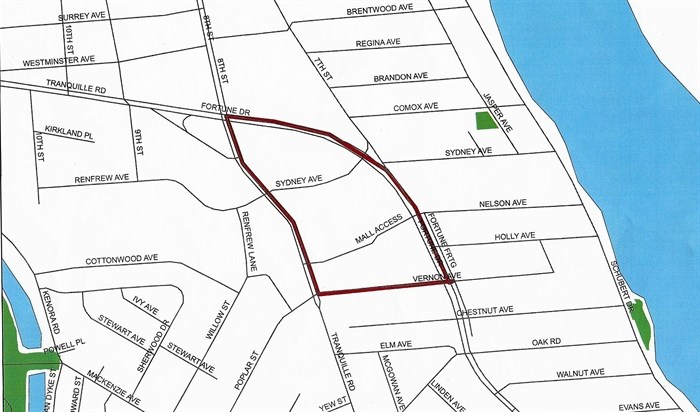
Image Credit: Shutterstock
October 29, 2016 - 8:00 PM
'RED ZONES ARE A DESPERATE SHORT-TERM SOLUTION.'
KAMLOOPS - Property crime is on the rise across Kamloops with no area immune to it and advocates are saying "red zones" in the city have just moved the problem across the community.
It’s been 12 years since the city implemented its first red zone in the area surrounding Riverside Park, a section of the city where street-level crime was out of control at the time.
A red zone is a section of a city, usually determined by police and city council, where certain offenders aren't allowed. Police, probation, or the court determine who isn't allowed into the red zones, usually offenders who have an extensive history of street-level crime in the area.
Kamloops RCMP teamed up with bylaw, ASK Wellness and the City of Kamloops in 2004 to try and re-gain control of the downtown core.
But a few years later, it was back to the drawing board. Executive director of ASK Wellness, Bob Hughes, says another red zone had to be implemented in 2008 surrounding the Tranquille Road business district.
“It displaced everybody from the South Shore over to the North Shore,” Hughes says. “The same issues emerged in terms of street-level drug trafficking (and) prostitution.... The North Shore at the time… was absolutely out of control. It was a desperate time and red zones are a desperate short-term solution."
But Kamloops RCMP spokesperson Cpl. Jodi Shelkie says even though those red zones are still in place, it has never caused an issue with moving crime from one part of the city to another.
“No, it hasn’t pushed it elsewhere,” she says. “It’s kind of disseminated people elsewhere throughout the community. They’re not all moving some place else, hanging out there and committing crime.”
Kamloops lawyer and Canadian Bar Association member Bill Sundhu says banning someone from a red zone is a difficult and individualized process.
"The reality is there (are) some problems with them," Sundhu says. "One of the problems is, you often push the problem out to another neighbourhood or area, you don’t really solve the problem."
Shelkie compares red-zones to evicting people from a house where a lot of criminal activity has taken place. When those people are told to leave, they’ll likely go live in another place together and continue with criminal behaviour. She says red-zones are much different than that.
“In this situation it’s not happening all at once, so people are arrested at different times throughout the year. They don’t likely know each other and they’re going to different places.”
The area surrounding the Northills Mall bus loop has recently been made a red-zone, although RCMP could not confirm when it was implemented and Hughes wasn't aware the zone was made official.
“A lot of stuff happens there, so that’s why we established this,” Shelkie says.

The North Shore red zone applies to the areas within Don Street to the east, Tranquille Road to the north, Poplar and Thrupp Streets to the west and the Thompson River to the south.
Image Credit: CONTRIBUTED

The South Shore red zone includes the area within Battle Street to the south, First Avenue to the west, Sixth Avenue to the east and the Thompson River to the north including the entirety of Riverside and Pioneer parks.
Image Credit: CONTRIBUTED

The Northlls red zone is the area bordered by Vernon Avenue to the south, Tranquille Road to the west and Fortune Drive to the east and the north.
Image Credit: CONTRIBUTED
Hughes agrees with the importance of gaining control of areas which have been plagued by property crime, drug trafficking, open drug use and prostitution, but says red-zones shouldn’t be the only solution offered.
“My concern with just simply using enforcement such as red-zoning and ticketing people, is there are tremendous risks with profiling people that are deemed to be undesirable,” he says. “That, I think, is a very slippery slope and a very dangerous slope that meets various opposition from organizations and from civil liberties groups.”
Kamloops RCMP Supt. Brad Mueller spoke to the public this week about the increase in property crime Kamloops has seen in the past year and agrees with Hughes about using a "four-pillar approach" instead of solely using enforcement. The four pillars include prevention, treatment, enforcement and harm reduction.
Hughes says he’s spoken to several people who have received bylaw tickets for panhandling, jay-walking and even riding a bike without a helmet.
“There (have) been numerous people in the city who have been ticketed with bylaw violations, who are totally ill-equipped to be able to pay those bills,” Hughes says. “I think it’ll be at the discretion of the RCMP in the city of Kamloops how far they want to push those.”
If someone has several bylaw violations within a red zone, the court has the discretion to order them to not go to the area. It’s not clear how many people are currently restricted from entering the red zones, since people can be put on those conditions through RCMP, the court or probation.
Sundhu says banning marginalized people from these zones is not a "blanket" solution. He says these no-go orders need to be crafted carefully in order to allow people to access the services they need.
"If you bar them from a certain area of town, you may be barring them from their shelter, you may be barring them from their methadone program," Sundhu says. "You have to be very careful, you have to look at the whole of the circumstances and craft an order carefully.
Although red-zones are generally used as a short-term solution for tackling a high-crime area, Hughes says the real issues at hand remain: An epidemic of drug addiction and a housing crisis in the city.
“If you’re clearly doing crime, such as break and enters, robberies and violence then of course that’s a criminal act and needs to be met with a criminal response,” Hughes says. “If we’re red zoning people who are in the depths of addiction and who are homeless, have nowhere to stay or go, then that’s what we need to resolve in tandem with the RCMP and other stakeholders, is finding real solutions for these people to be able to access treatment and get well, as well as finding a place to call home.”
The real solution, Hughes says, is to implement a system which will offer housing and rehabilitative services to people who don't have either option available to them.
"Until you can actually find a place for them to call home and have access to effective and efficient and timely treatment services, you’re going to have these people just left living outside," he says. "I think the evidence is clear that there is a crisis in terms of housing and addiction."
To contact a reporter for this story, email Ashley Legassic or call 250-319-7494 or email the editor. You can also submit photos, videos or news tips to the newsroom and be entered to win a monthly prize draw.
We welcome your comments and opinions on our stories but play nice. We won't censor or delete comments unless they contain off-topic statements or links, unnecessary vulgarity, false facts, spam or obviously fake profiles. If you have any concerns about what you see in comments, email the editor in the link above.
News from © iNFOnews, 2016